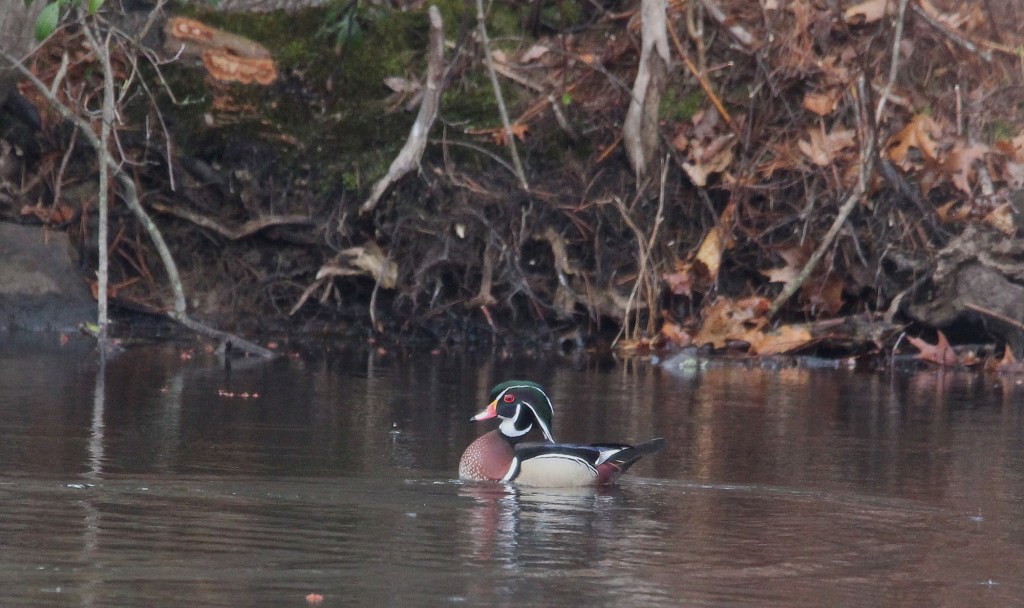
The weather icons on my iPhone showed rain starting at 8 a.m. I figured that would give me about an hour of dry weather to look for some early spring migrating birds.
No such luck. The rain started even before sunrise so my hour of dry weather wasn’t going to happen. Instead of rolling over and going back to sleep (a very tempting option) or mindlessly scrolling through social media, I decided to head out into the rain anyway. OK, I did take a few minutes to do Wordle quickly before heading out.
The walk started in a light rain, and a lot of birds were out singing. Immediately, I heard robins, cardinals, blue jays, song sparrows and a field sparrow in the distance. Field sparrows have a very distinctive song that sounds like a ping-pong ball bouncing on a table with the time between bounces getting progressively shorter, just like a real ball would do.
As soon as I committed to a trail leading me farther into the woods, the rain picked up. It never turned into a downpour, but it was a good, steady rain. Thankfully, the temperature was a very manageable 55 degrees, so I just got wet instead of wet and cold. I like birdwatching in all types of weather, but a cold rain is probably the worst. Heavy wind is not much fun either, but I would take it over a cold rain.
The walk progressed without any overly thrilling sightings. There were a few eastern phoebes, a handful of northern flickers and a fairly large group of red-winged blackbirds. I looked through the binoculars to see if there were any other blackbird species mixed in with the red-wings, but the dark gray sky, foggy aura and falling rain made it hard to pick out any details on the birds.
On the way back to the parking lot, I did hear and see a few nice early migrants: a lone gray catbird singing and skulking in the brush, and a few male eastern towhees in the bramble. One curious towhee popped up and showed me his handsome white, black, and rusty-red plumage.
Despite the rain, I ventured down to the pond for a little detour to see what might be on or around the water. The winter ducks such as mergansers and ring-necked ducks had all disappeared (they were there last time I visited), but a male wood duck swam across the surprisingly calm water and an unseen kingfisher rattled in the trees somewhere along the pond’s edge.
The rest of the walk back was uneventful until I got within half a football field’s length away from the car. There, I noticed a pileated woodpecker working the top of a dead tree. When I walked a few more steps and changed my angle, I noticed a northern flicker sharing the same tree a few yards farther down the trunk. I’m pretty sure it was the first time I had seen a pileated woodpecker and northern flicker in the same tree.
While there are some obvious disadvantages to birding in the rain, such as poor photography conditions and getting soaked, one of the great advantages is that you are almost guaranteed to have the area to yourself. I did cross paths with one hardy jogger, but that was it in terms of other human beings. Not that this park is usually crowded, but there are typically a decent amount of people enjoying their various hobbies.
It wasn’t a long walk or a particularly successful walk in terms of bird species, but it was refreshing and much more invigorating than lounging in bed all morning. In fact, after the long winter, the warm rain felt quite nice.








